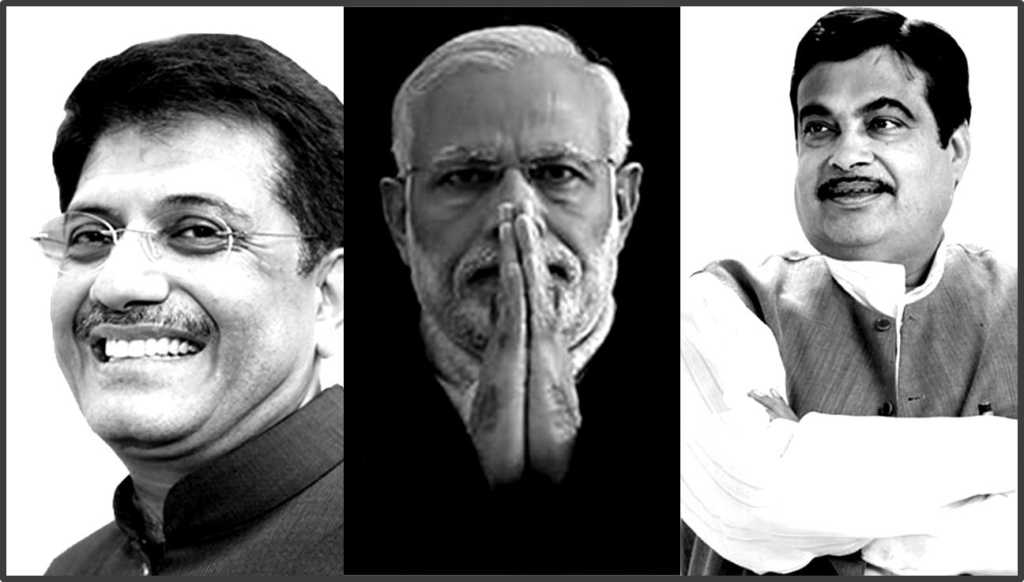A big reason why Indian villages have remained backward and poor so far has been the glaring lack of infrastructure. There were no roads, there was no electricity, no hospitals, no schools, and not even toilets. Just imagine, it needed a Prime Minister like Shri Narendra Modi, after more than 6 decades of independence, to tell the people of the country that millions of toilets needed to be built in the villages so that people are not forced to defecate in the open, such has been the apathy.
Since the inception of the new NDA government headed by the BJP at the Centre, the biggest stress has been laid on starting new infrastructure projects and restarting projects that had been stuck in various political and administrative bottlenecks.
And since development cannot happen without developing the villages of India, the current government is putting special stress on rural drinking water and sanitation, rural housing, rural roads, rural energy, rural broadband connectivity, and rural marketing infrastructure.
Electricity is at the core of any development effort. This is why the Ministry of Power under the able leadership of Shri Piyush Goyal has been working at breakneck speed to bring power to as many villages as possible. In 2014 the government made a commitment under “Power for All” to provide 24×7 power supply to the whole of the country and especially the villages, by 2019. There is an ambitious plan to electrify all the villages in the country by the end of 2017.
According to a report provided by NITI Aayog, out of the designated 18,452 villages, 13,000 villages now have electricity and the power ministry is on its way to achieving its target of providing electricity to all 18,452 villages by the end of the year. In fact, while speaking at the two-day long Conference of Ministers for Power, New & Renewable Energy & Mines of States & Union Territories (held on 3rd and 4th May, 2017), Shri Piyush Goyal told news reporters that despite delays caused by rains, all the villages may get electricity one year in advance.
Of course, electrifying villages is different from providing them uninterrupted power and this is an area the Ministry of Power will be focusing on in the coming months and years.
The government has also committed to build 10 million Pucca houses, primarily for the rural poor, by 2019. 500,000 of such houses were already built in 2016-2017 and the same number of houses are projected to be built in 2017-2018.
The laying of roads provides massive job opportunities to the rural poor and they also connect remote villages to the rest of the nation. A big portion of the farm produce fails to reach the markets due to lack of roads or it gets spoiled due to non-existent or ill-maintained roads.
Under the Pradhan Mantri Gram Sadak Yojana (PMGSY) great strides are being made in this field. Against 73 km of roads on an average per day during 2011-2014, 113 km of roads on an average per day were laid in 2016-2017.
Under the astute leadership of Shri Nitin Gadkari, a total of 6,604 km out of the 15,000 km of target set for national highways in 2016-17 have been constructed by the end of February 2017 and since most of these highways go through India’s villages, they are bound to have very positive impact on the connected villages.
2,50,000 village Panchayats were scheduled to be covered under the National Optical Fibre Network (NOFN) by December 2016 as Internet connectivity links villages directly to the information highway. Much of the target has already been achieved. Budget 2017 proposes Rs. 10,000 crores for the expansion of Bharatnet, the government’s premier rural Internet connectivity program. So far, under the Bharatnet project, 1,55,000 km fibre-optic cable has been laid. According to Finance Minister Shri Arun Jaitley, broadband connectivity over the fibre-optic cable will be available to more than 1,50,000 gram panchayats, with WiFi hot spots and access to digital services, at low tariffs.
Alarmingly, 70% of health expenditure has to be borne by people in rural as well as urban areas despite constant efforts by the government to be a most of the cost. To make sure that the modern-day health facilities reach to the poor in rural areas, the National Rural Telemedicine Project has been launched under the National Rural Health Mission. The renowned mission to free India from open defecation is a humongous step towards developing health infrastructure.
Another positive impact of a sustained rural infrastructure development is its impact on the overall GDP of the country. The rural economy provides, despite being majorly unorganized, 70% employment in the country and constitutes almost 50% of the GDP.
Almost two-thirds of Indian population lives in 6,38,365 villages and earns one-third of the national income, despite overwhelming poverty and lack of basic infrastructure. It’s the sheer number that makes the rural economy such an integral part of the growth of the country. India’s per capita GDP in rural regions has grown at a Compound Annual Growth Rate (CAGR) of 6.2% since 2000 and it is projected to grow even faster due to the available infrastructure. Even with the current economic situation in the villages, the FMCG sector in rural and semi-urban India is expected to cross USD 20 billion mark by 2018 and reach USD 100 billion by 2025.
Infrastructure development in rural areas will provide job, health and education facilities to people right where they are. This will reduce migration to the cities, reducing congestion in the cities as a result. Many economists mistakenly believe that the key to overall national development is rapid urbanization. The key to development is a balanced growth. When people in the villages don’t have to leave their ancestral homes to seek a better life elsewhere, true development will happen.
